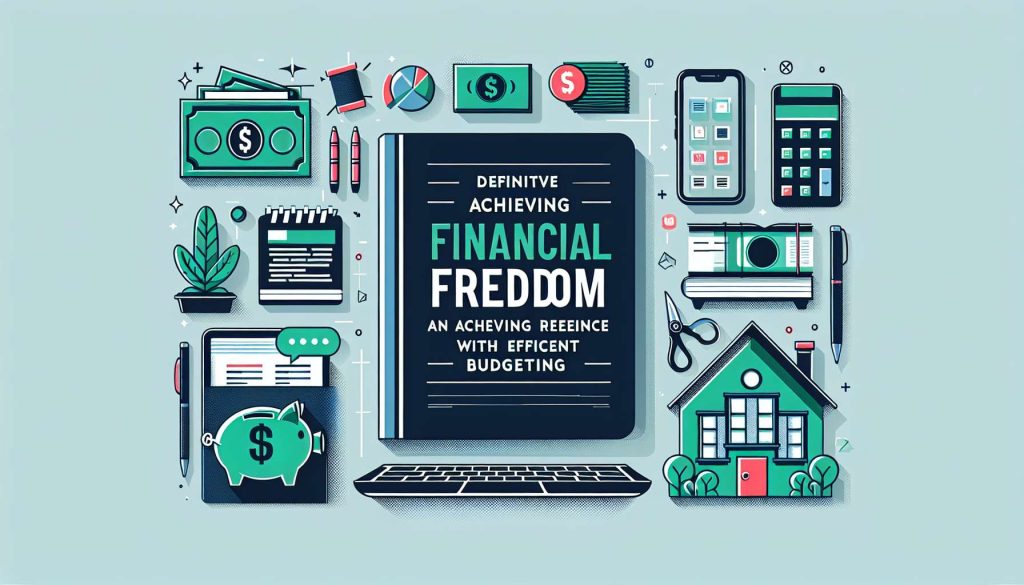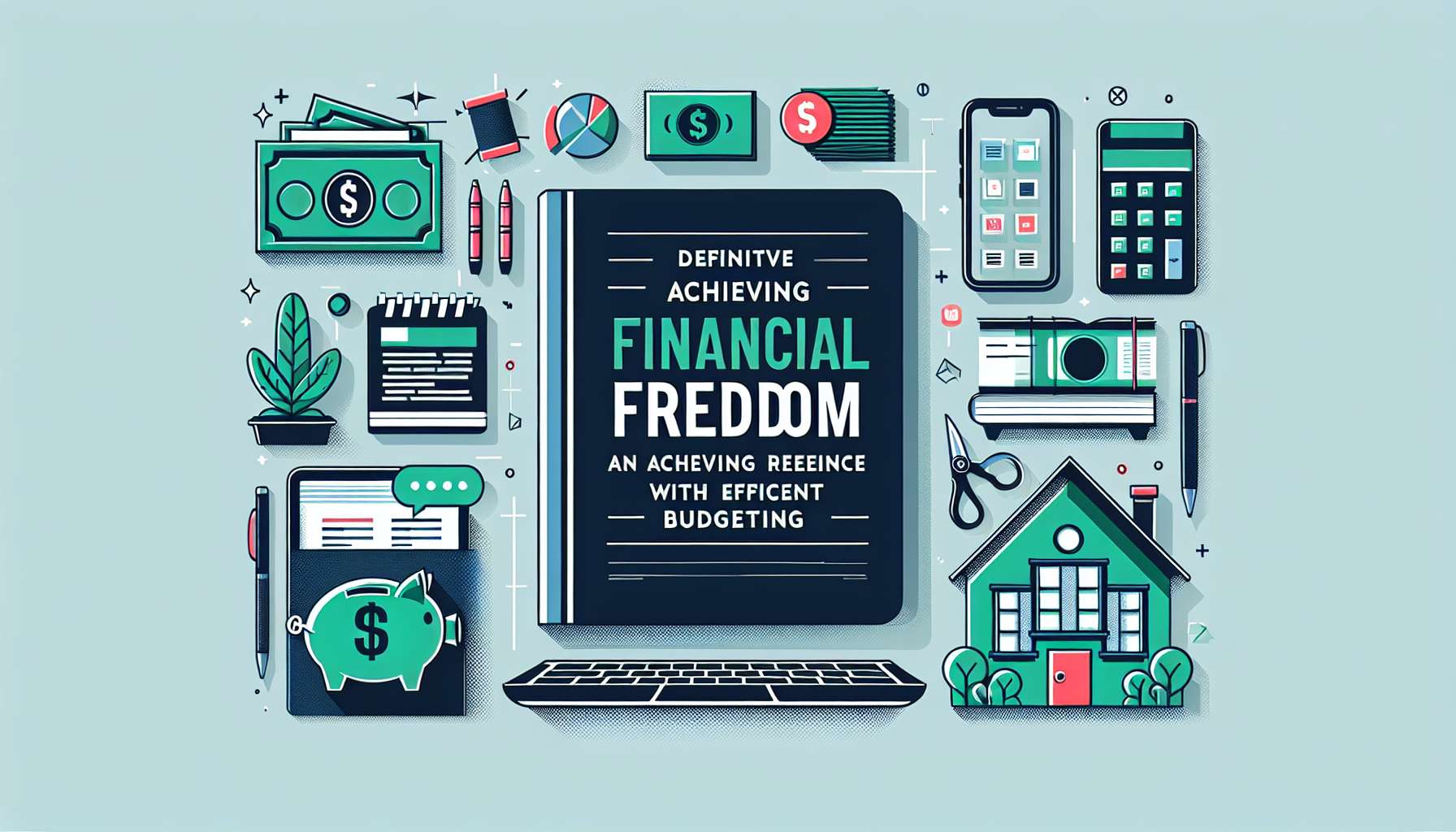Ultimate Guide to Financial Freedom Through Efficient Budgeting

Anúncios

Everyone dreams of financial freedom — the ability to live comfortably, pursue passions, and make life decisions without being limited by money. Yet, for most people, this dream feels distant. The truth is, financial freedom isn’t about earning millions; it’s about managing what you already have with intention and discipline.
At the heart of every financial success story lies one simple but powerful tool: efficient budgeting. Budgeting doesn’t mean restriction or deprivation — it means gaining control. It’s the foundation that allows you to pay off debt, save strategically, and build wealth over time.
This comprehensive guide will show you how to use budgeting not just to survive, but to thrive — helping you create a sustainable path toward long-term financial independence.
1. Understanding Financial Freedom
Before diving into budgeting, let’s define what financial freedom truly means. It’s the point where your finances are structured in a way that gives you choices. You’re not living paycheck to paycheck. You’re not anxious about bills or emergencies. Instead, you’re confident, secure, and free to live on your own terms.
Financial freedom doesn’t mean never working again — it means your income, savings, and investments cover your lifestyle, so money becomes a tool for fulfillment rather than a source of stress.
Achieving this requires one essential habit: controlling your spending and understanding your cash flow. That’s where budgeting comes in.
2. Why Budgeting Is the Key to Wealth Building
A budget is your financial roadmap. It tells your money where to go instead of wondering where it went. Without it, even a high income can vanish into impulsive spending and unnecessary debt.
Budgeting gives you clarity about your financial habits and helps you align daily decisions with long-term goals. It allows you to:
-
Pay yourself first by prioritizing savings.
-
Eliminate unnecessary expenses that drain your income.
-
Track progress toward major goals like homeownership or retirement.
-
Reduce stress by knowing exactly what you can and can’t afford.
In short, budgeting is not about limiting your life — it’s about designing the life you want.
3. Step 1: Assess Your Current Financial Situation
Before building a budget, you need to understand where you stand. This is your financial reality check.
a) Calculate Your Income
Start by listing all sources of income — salary, freelance work, side hustles, rental income, or dividends. Focus on your net income (after taxes) since that’s what you can actually spend.
b) Track Your Expenses
For at least one month, record every expense — from rent and groceries to coffee and streaming subscriptions. Use budgeting apps like Mint, YNAB (You Need a Budget), or PocketGuard to automate this process.
c) Analyze Spending Habits
Once you’ve tracked your expenses, categorize them into:
-
Needs: essential costs like housing, utilities, food, and transportation.
-
Wants: non-essential items such as dining out, shopping, or entertainment.
-
Savings/Debt payments: money allocated for building savings or repaying loans.
This breakdown reveals where your money goes — and where you can make improvements.
4. Step 2: Set Financial Goals
A budget without goals is just a list of numbers. To make it meaningful, set clear and achievable financial objectives.
a) Short-Term Goals (3–12 months)
Examples: paying off a credit card, building an emergency fund, or saving for a vacation.
b) Medium-Term Goals (1–5 years)
Examples: buying a car, starting a business, or saving for a home down payment.
c) Long-Term Goals (5–20 years)
Examples: funding retirement, children’s education, or reaching financial independence.
Each goal should be specific, measurable, attainable, relevant, and time-bound (SMART). This approach keeps you motivated and focused.
5. Step 3: Choose the Right Budgeting Method
Not all budgets are created equal. The best budgeting method depends on your personality, income, and goals. Here are three of the most popular and effective approaches:
a) The 50/30/20 Rule
This simple method divides your income into:
-
50% for needs
-
30% for wants
-
20% for savings and debt repayment
It’s perfect for beginners who want structure without complexity.
b) Zero-Based Budgeting
In this system, every dollar you earn has a specific purpose. At the end of the month, your income minus expenses equals zero. This ensures you make intentional spending decisions — no “leftover” money to waste impulsively.
c) Envelope or Category-Based Budgeting
This approach involves assigning specific spending limits to each category (e.g., groceries, entertainment). In the digital age, many apps simulate the “envelope system” without physical cash.
6. Step 4: Build an Emergency Fund
A crucial step toward financial freedom is protection against the unexpected. Life happens — medical bills, car repairs, or job loss can disrupt your financial stability.
An emergency fund acts as your safety net. Aim to save at least three to six months’ worth of living expenses in a separate, easily accessible account.
With this fund in place, you can handle life’s surprises without resorting to credit cards or loans, keeping your financial journey stress-free.
7. Step 5: Manage and Eliminate Debt
Debt is one of the biggest obstacles to financial freedom. While some debt (like a mortgage or student loan) can be strategic, high-interest debt drains your wealth and limits your options.
a) The Debt Snowball Method
Pay off your smallest debts first to gain momentum. Each victory builds confidence and motivation.
b) The Debt Avalanche Method
Focus on paying off debts with the highest interest rates first to save money in the long run.
Whichever method you choose, make consistent payments and avoid taking on new debt unnecessarily. As your liabilities shrink, your sense of freedom expands.
8. Step 6: Automate Your Finances
Automation is one of the smartest strategies for stress-free budgeting. Set up automatic transfers for:
-
Savings contributions (right after you get paid).
-
Bill payments (to avoid late fees).
-
Investment accounts (to build wealth passively).
By automating key financial tasks, you eliminate procrastination and reduce the temptation to spend impulsively.
9. Step 7: Review, Adjust, and Optimize
A budget is a living document — not a one-time plan. Life changes: incomes rise, expenses shift, and priorities evolve.
Review your budget monthly and ask:
-
Did I stick to my plan?
-
Where did I overspend?
-
Can I save or invest more?
Adjust accordingly. Over time, these small corrections compound into major progress.
10. Saving and Investing: The Next Step After Budgeting
Budgeting helps you manage money efficiently, but investing is what multiplies it. Once you have your expenses under control, start allocating a portion of your budget toward wealth-building.
a) Build Long-Term Wealth Through Investments
Options include:
-
Stocks and ETFs: offer higher returns for long-term growth.
-
Bonds: provide stability and predictable income.
-
Retirement accounts (401k, IRA): tax-advantaged tools for building future wealth.
b) Automate and Diversify
Set up recurring contributions and diversify across asset classes to balance risk and reward.
Investing ensures that your money grows faster than inflation, securing your financial future.
11. Avoiding Common Budgeting Mistakes
Even the best plans can fail if you fall into common traps. Here’s what to watch out for:
-
Being too rigid: leave room for flexibility — unexpected costs happen.
-
Ignoring small expenses: daily coffees and subscriptions add up.
-
Failing to update your budget: outdated numbers lead to poor decisions.
-
Not having goals: without purpose, it’s easy to lose motivation.
-
Neglecting to reward yourself: celebrate milestones to stay consistent.
Remember — budgeting should empower you, not overwhelm you.
12. Developing a Financial Freedom Mindset
Beyond the numbers, financial freedom is about mindset. Cultivate habits and attitudes that support your journey.
-
Think long-term: focus on progress, not perfection.
-
Stay consistent: discipline matters more than big wins.
-
Practice gratitude: appreciating what you have reduces unnecessary spending.
-
Avoid comparison: focus on your path, not others’ lifestyles.
The goal isn’t to have more — it’s to need less while living with purpose and peace of mind.
13. Tools and Apps for Smarter Budgeting
Technology can make financial management easier and more efficient. Consider using:
-
Mint: tracks spending and provides budget insights.
-
YNAB: helps allocate every dollar effectively.
-
Empower (Personal Capital): combines budgeting and investment tracking.
-
PocketGuard: shows how much “safe-to-spend” money remains after bills.
These tools simplify your financial life, giving you real-time data to stay on track.
Conclusion: From Budgeting to Freedom
Financial freedom doesn’t come from luck — it comes from discipline, awareness, and intentional choices. Budgeting is the foundation that transforms financial chaos into clarity.
By understanding your spending, setting goals, eliminating debt, and saving consistently, you create a system that supports long-term independence.
Remember, efficient budgeting isn’t about restricting your lifestyle — it’s about directing your money toward what truly matters. Each dollar you manage wisely today brings you one step closer to the life of freedom, security, and fulfillment you deserve.
Start now. The path to financial freedom begins the moment you take control of your budget.





